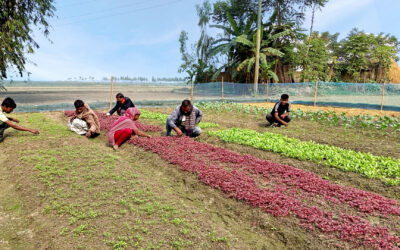Cyclone Yaas leaves a trail of destruction and a crisis that will worsen
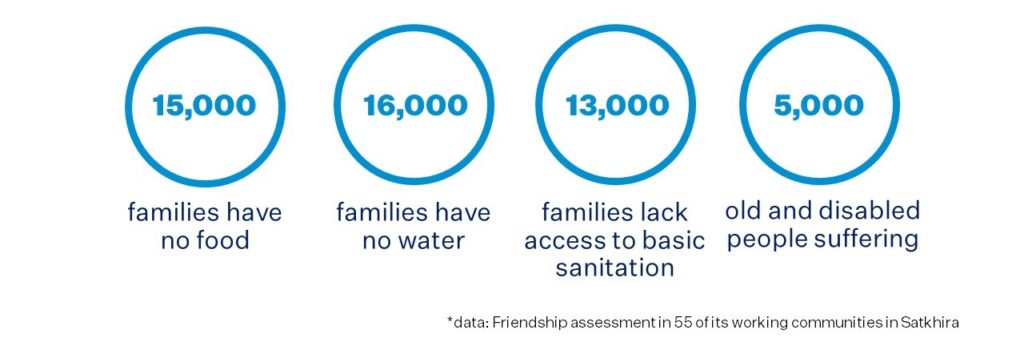
FRIENDSHIP NEWS DESK
June 14, 2021
Thousands of families in the southern coastal district of Satkhira, which borders India, are suffering from a prolonged crisis of food and water after their villages were flooded in the aftermath of Cyclone Yaas, which made landfall on May 26.
While the full fury of the storm itself was felt across the border in India, the southern districts of Bangladesh experienced tidal surges that were 6 to 7 feet higher than normal in the days following the storm, due to the May supermoon. The saline tidal water broke through at least 10 points on embankments, and overflowed many others, flooding the villages within, and laying waste to fresh water sources, latrines, crops and fisheries.
National print media estimated some eleven people had died in the cyclone, but the government puts the estimate at two.
Many of the long-term impacts of the crisis will show themselves gradually as the effects of salinisation become evident. Locals fear that the worst is yet to come.
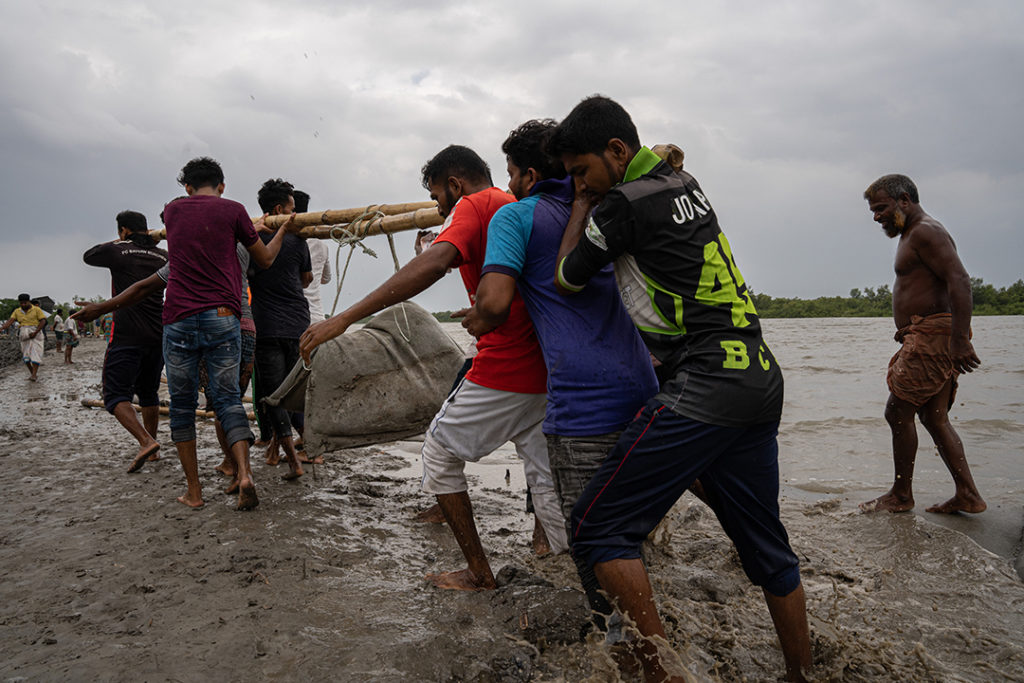
Crisis of basic necessities
“Diarrhoea has broken out across our village,” said Nelima Rani Mondol, Friendship Community Medic-aide for West Patakhali village in Shyamnagar. “There is sickness in almost every household.” She said the floods submerged and filled the latrines, leaving no functional ones in her village
“People are forced to go outside, under cover of darkness,” she said. The embankment had burst at three points near her village, said Nelima. Locals banded together to make basic repairs, but when the high tide comes in twice a day, salty river floods the village, carrying with it waste from dysfunctional latrines and elsewhere, right into people’s homes.
An initial assessment by Friendship in the 55 villages in Satkhira where it works found more 55,000 people were impacted by cyclone damage, including more than 5,000 disabled and aged people.
The onrush of saline water had also destroyed most sources of potable water. “For clean water, most people have to travel 2km to get water from Friendship’s water treatment plant,” said Nelima. “Not everybody can make it there.” A few people have rudimentary rainwater harnessing systems in their homes, she said.
Flood-affected communities are also facing a shortage of food, as the saline flooding has destroyed the majority of livelihoods in the region.
The present disaster comes at a time when 100,000 people are still displaced, even more trying to recover from super-cyclone Amphan, which struck the same region one year ago.
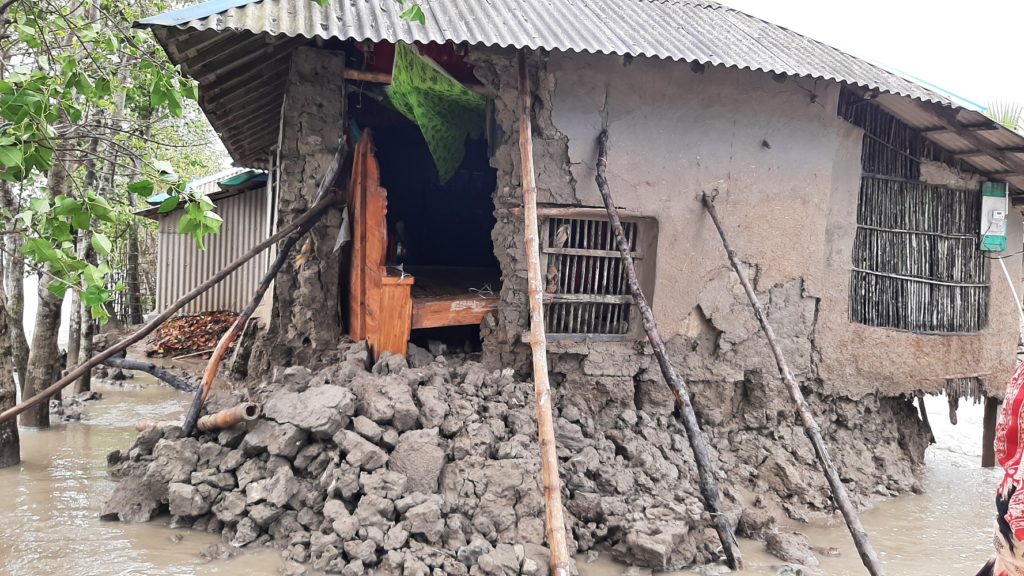
Loss of infrastructure and homes
An initial assessment by Friendship in the immediate aftermath of the storm found that almost 8,000 homes, 6,000 latrines and 800 tube wells had been damaged in the sub-districts surveyed. The numbers are likely to have increased.
Floating latrines developed by Friendship during the 2019 monsoon floods in the northern districts have been refitted and deployed in Satkhira, said Mizanur Rahman, regional manager for Climate Action. However, these are not enough. Some 612 latrines and 115 tube wells are needed immediately on an emergency basis, according to an initial assessment by Friendship.
The floods and embankment breakages have also disrupted road linkages into and out of communities. “During the high tides, the only way to leave or enter Protapnagar is by boat,” says Ibrahim Hossain, caretaker at Friendship’s mangrove plantation in Sonatonkathi. “The usual market place gets flooded twice a day during the high tides, and so we have to spend 50 taka (60 cents) for a trip to the market by trawler boat.”
Protapnagar’s embankment burst in three spots. Of these, locals have repaired one. However, the other two are major breakages that cannot be repaired by locals. This means that the union is flooded twice a day during high tide. Ibrahim’s home is also flooded. Protapnagar also suffered embankment damage during Cyclone Amphan in May last year, following which floods continued for more than nine months before the embankments were repaired.

Friendship’s initial assessment found at least 1,071 acres of crop has been completely destroyed by the storm. Far more farmland and fisheries are likely to be damaged in the coming days due to the effects of salinisation and flooding.
Friendship’s mangrove plantations, which aim to forest sandbanks outside embankments in order to create a protective barrier when the trees mature, also suffered significant damage in the cyclone. 3,000 saplings were damaged. 1,200 pillars and thousands of feet of fencing have been destroyed.
Yet another disaster
Satkhira and Khulna districts, being situated close to India, have experienced an alarming growth in Covid-19 infections, particularly the Indian variant. The present salinity and waterlogging crisis come as another blow to a district suffering the impacts of pandemics and lockdown.
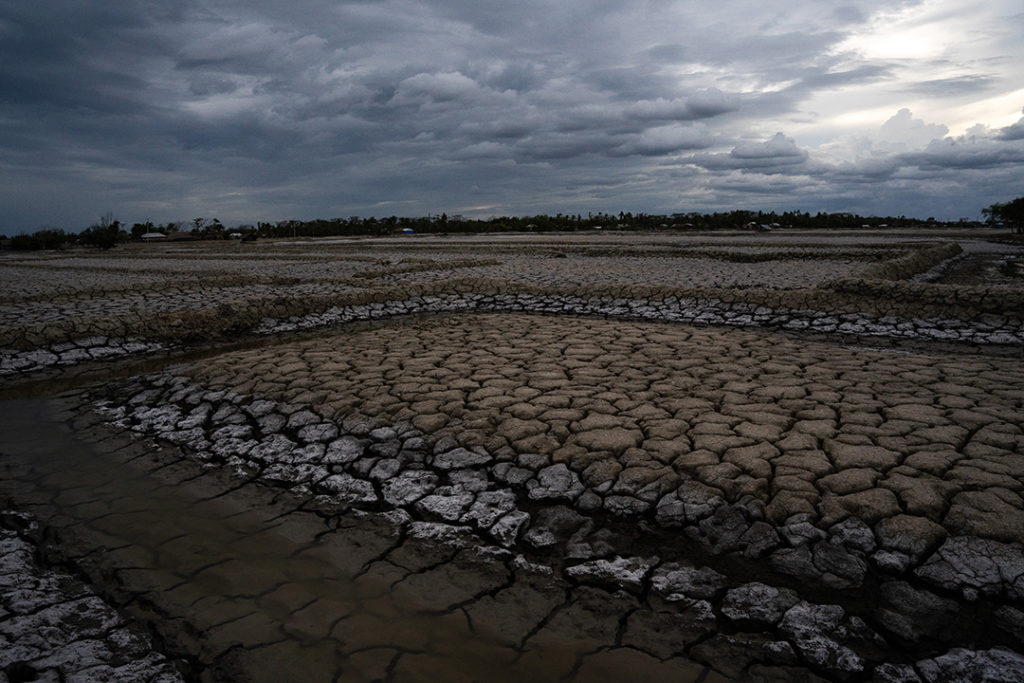
Long-term damage
“In my experience, the real damage from the cyclone unfolds in the following weeks and months,” said Mizan. “Homes disintegrate, trees die, the soil become barren.” Once the salty water of the coastal rivers floods a community, the soil is damaged for years, and it takes many monsoons for the salinity to come down to a level where old lost livelihoods can be recovered.
Friendship programs, including creation of alternate livelihoods for farmers, transitional funding to elevate ultra-poor families into the mainstream economy, water treatment plants, healthcare network, and mangrove plantations that create livelihoods while creating protective barriers outside embankments, have been addressing salinity-related crises for years.
Each storm and each breach of embankments accelerates the myriad problems related to salinisation and presents new challenges in our work.
Support Friendship’s emergency interventions
- Livestock support and seeds for homestead gardening can help ensure the gap in nutrition due to a lack of food, and provide a supplementary income. Reliance on rice tends to cause malnutrition over time, especially in children.
- Repair and reconstruction of homes before the rainy season is essential.
- Mangrove plants are extremely important in providing protection to the coastal communities, and lost plants and fencing must be replaced. Since most of the sewage system has been destroyed, emergency latrines must be installed. Damaged tube wells and latrines must be repaired.
- Healthcare services are especially critical due to the spread of waterborne diseases and salinity-related illnesses.
- Sustainable economic development initiatives to help communities recover their livelihoods.
- Advocacy with local and national government and stakeholders in impacted areas to get embankment protection, support towards building alternate livelihoods and special assistance.


